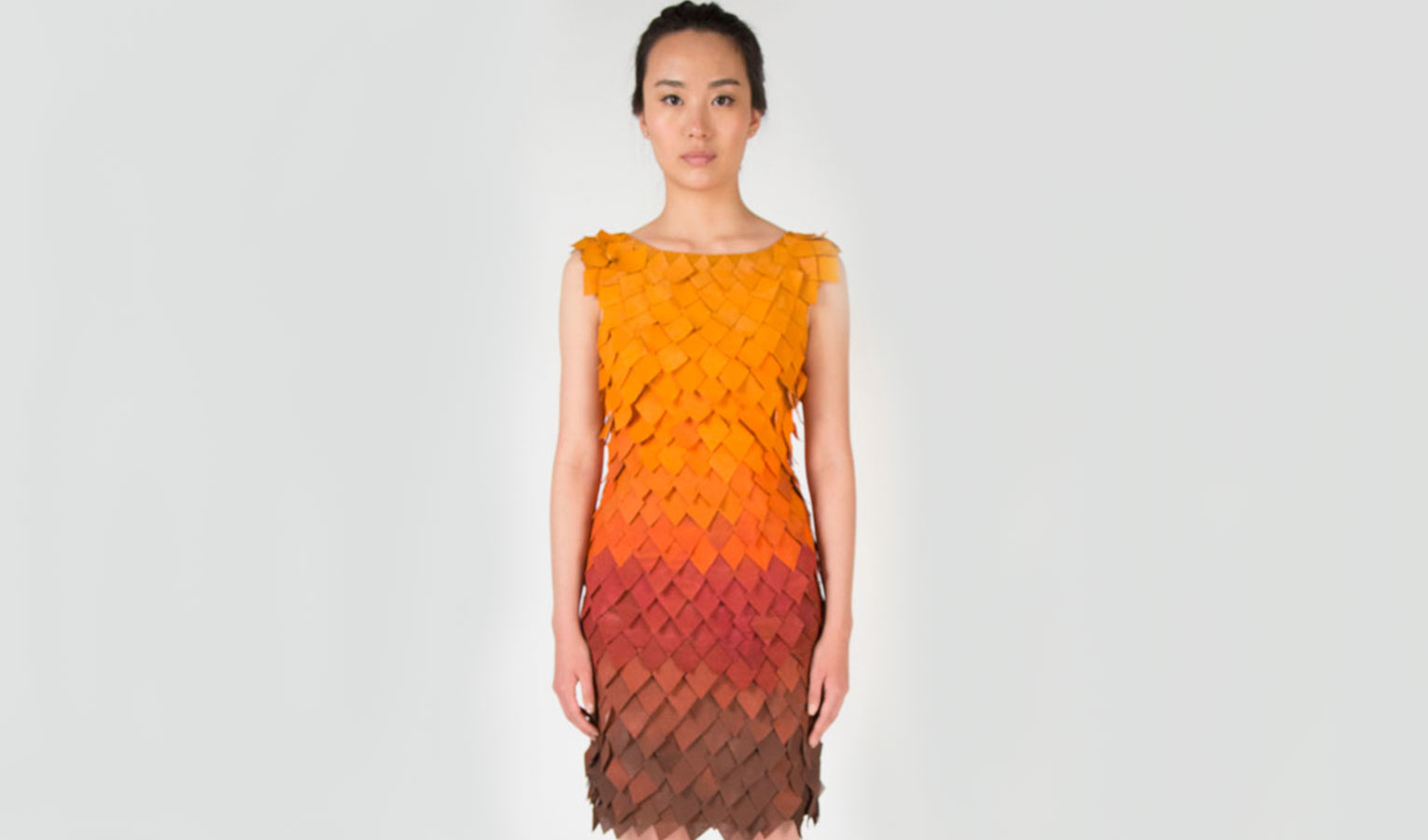Fall
interactive garment

Marko Tandefelt
Katherine Moriwaki
Writing and ResearchLoretta Joelle Wolozin
Andrew Zornoza
Fall is an interactive garment and that mimics nature’s responsive systems through hidden electronic mechanism. The behavior of the garment is inspired by nature’s seasonal behavior of Defoliation, the process through which trees naturally lose their leaves. The piece reacts to the simulated use of surrounding environmental factors.The objective is not only to augment a garment’s functionality but also to use its qualified technology as an instrument to create an expressive interactive piece.
My thesis project was evolved around the questions: What if when the temperature got hot suddenly, our clothes would start to break apart in response? What if they had the skill to behave depending on the surrounding conditions? What if garments had the ability to sense the environment just like living organisms?
Those questions let me find the purpose for my thesis. I purpose to create a garment that can sense the environment and behave mimicking the way trees do. Trees have the natural built in system that allow them to shed their leaves depending on the temperature and light. The garment that I am proposing is Fall, an interactive garment which is inspired by nature’s seasonal responsiveness. The wearable piece explores nature’s system dynamics to develop new techniques for a performative garment. Fall also investigates artificial actuators to sense the environment and to respond stimuli.
In the fall, as the days shorten, and the temperature gets colder, the trees, without the light they need to sustain their chlorophyll, shed their leaves to keep their energy to survive for the winter ahead. This process was the inspiration for creating my garment’s mechanism. To prepare for the fall of leaves, trees activate “scissor cells” that split to create a bumping layer that forces the leaves out of place, destabilizing them so that they fall.
This process inspired me to design my garment’s mechanism. I use light from the simulated surrounding environment that I will create for my garment to activate arduino micro and servo motors. When there is less light, the servo motors speed up, making the leaves fall off the garment. There will be four servo motors embedded in the back of the garment which are attached to steel wires.The steel wires are inside clear tubes with tiny holes. At the site of each hole, I attached the leaves by melting wax onto steel wires When there is less light, the servos start to speed up and pull the steel wire. When the thread is pulled sideways, the leaf hits the side of the tube’s hole which breaks the wax.In that way, the mechanism makes leaves fall down.
The color palette for the garment comes from the foliage process.I decided to create my own fabric to give a gradient look similar to what deciduous trees have during the foliage period. I picked four colors from the foliage period and I started to spray paint over the muslin fabric. After getting the gradient pattern, I laser cut the fabric into stylized leaf shapes for my garment. Then I constructed the dress by attaching the leaves to a base made of cotton fabric.
The garment that I created a piece of wearable technology that is inspired by nature and changes in response to its environment. I used mimicry to capture the beauty of falling leaves and I believe that the piece will make audiences appreciate the natural world. This piece opens new ways of creating wearable technology not just to serve a functional purpose, but also to create artistic, performative and expressive pieces. My piece brings another perspective to the human body and to fashion. Instead of being death cloth, fashion can be “kinetic, dynamic and almost living expression of our unique experience with nature. I strongly believe that Fall can influence the fashion world to become more dynamic and to increase the way clothes can react to the world around them. I want clothing to have more responsiveness to the environment, so that instead of people always change their clothes, the clothes can sometimes change themselves.

Birce Ozkan
Born January 9th 1989 in Istanbul, Turkey, after having majored in international relations as an undergraduate at Koc University. She is currently an MFA Candidate in Design and Technology at Parsons, her work and projects focus on discussing the psychology of interactivity on the body, integrating technology, fashion, science, politics and art. Her major interests in material research, fashionable wearable technology, critical and creative design to combine them together as mediated instruments to create alternative interactive crafted pieces. She recently showcased her projects Make: Wearable on Runway Show at Javits Center and SXSW Austin TX 2015
